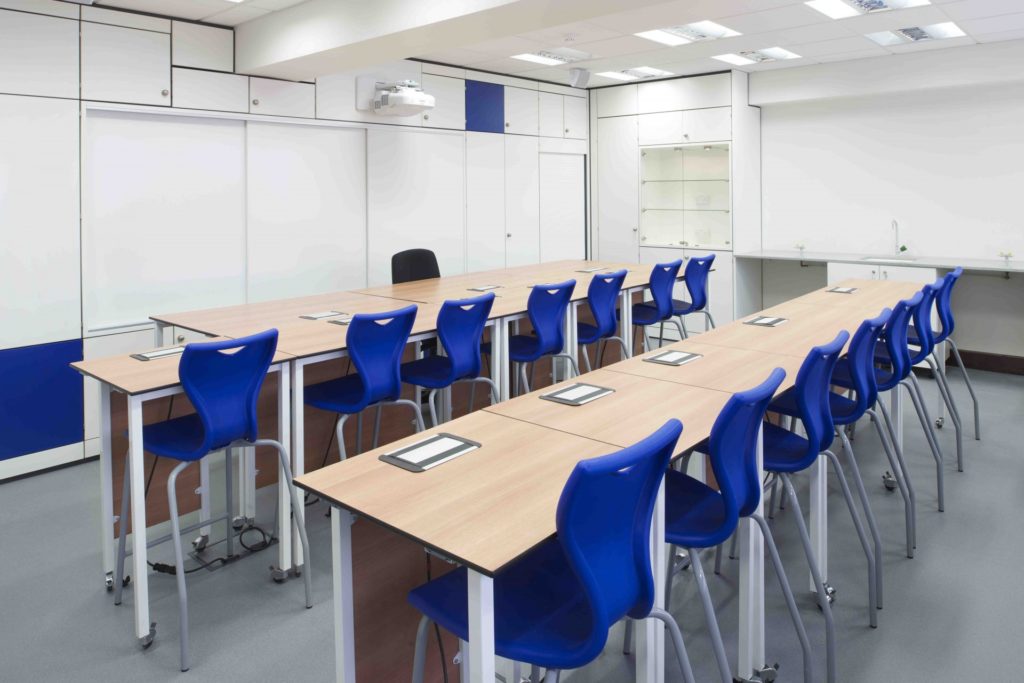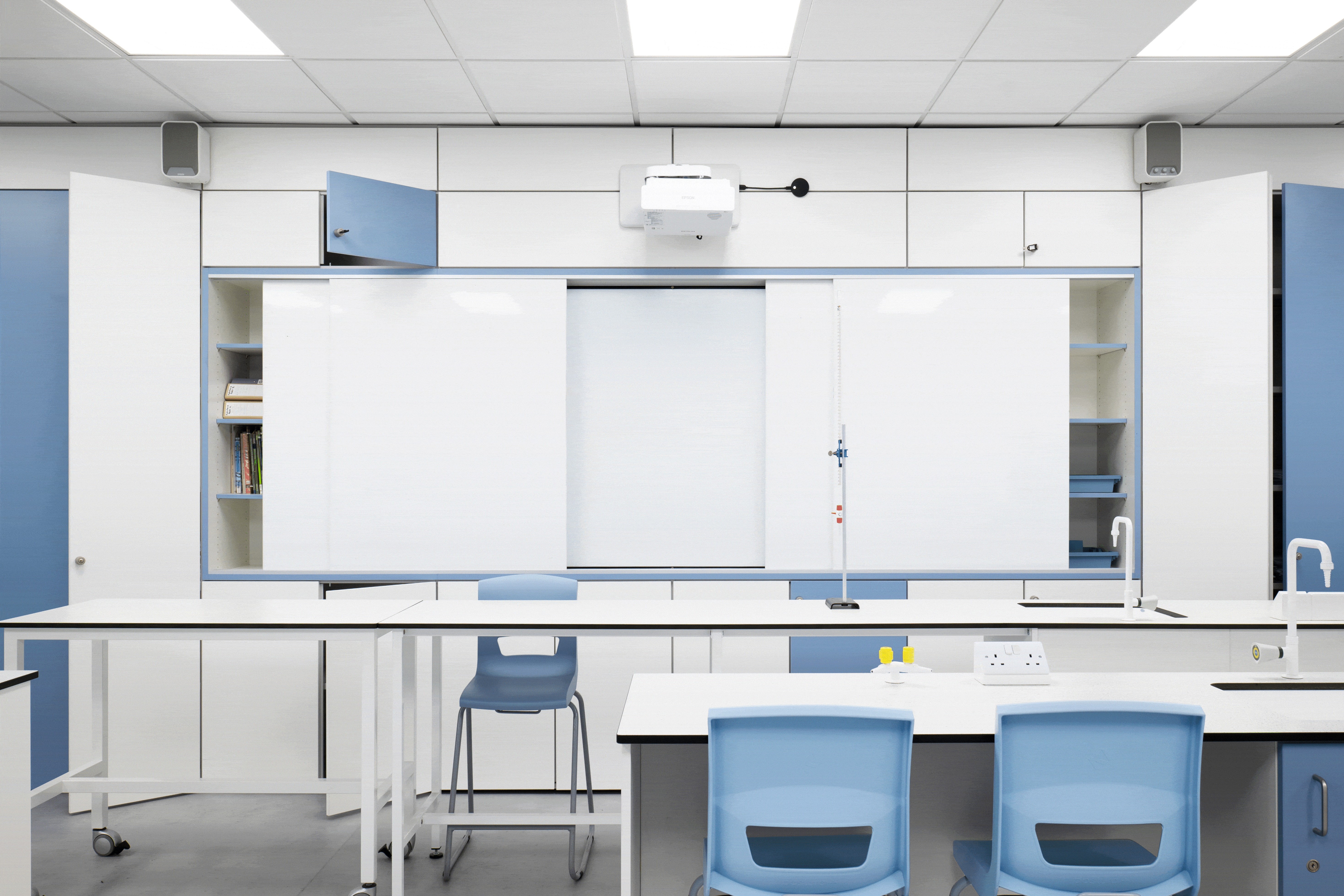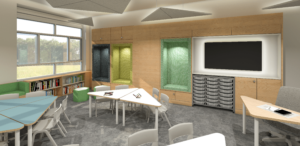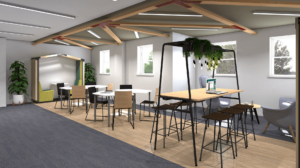[vc_row row_type=”row” type=”full_width” text_align=”left” css_animation=””][vc_column][vc_column_text]
Your classroom should be more than just a place for your pupils to work. It must project a sense of your teaching style, showcase your subject and above all else, inspire those who spend time in it.
[/vc_column_text][vc_empty_space][vc_column_text]Yet schools, and in particular classrooms, often develop over time, and not always in the most effective way. A busy and bustling classroom is in a constant state of flux and change. Hastily put together intervention zones can unconsciously become permanent features. Once temporary seating arrangements blend into their surroundings and remain indefinitely. Useful space becomes cluttered and the learning suffers.
But it’s never too late to make amendments and regain control of the teaching environment. Envoplan can help you break out of the ‘make-do’ mentality and restore your learning space to the showpiece quality teaching deserves. So whether you are designing a classroom from scratch or modifying an existing room, here are 10 steps that can help you tailor your setting to perfectly suit your purpose and needs.[/vc_column_text][/vc_column][/vc_row][vc_row row_type=”row” type=”full_width” text_align=”left” css_animation=””][vc_column width=”1/2″][vc_column_text]1.Get rid of your desk
One of the biggest barriers to making changes in your classroom environment is cost. This shouldn’t stop you. There are many small changes that can be made that deliver a profound impact. A radical suggestion is getting rid of your teacher desk. Removing this can drastically change the dynamics of your classroom. The space is now instantly opened up and the teacher/pupil barrier is broken down. You have now created an opportunity for a new learning space and a wide variety of seating options.[/vc_column_text][/vc_column][vc_column width=”1/2″][vc_single_image image=”20857″ img_size=”large” qode_css_animation=””][/vc_column][/vc_row][vc_row row_type=”row” type=”full_width” text_align=”left” css_animation=””][vc_column width=”1/2″][vc_single_image image=”20858″ img_size=”large” qode_css_animation=””][/vc_column][vc_column width=”1/2″][vc_column_text]2. See space through a child’s eyes
When was the last time you sat through a day at school. What is it like to be a pupil in your learning space? Spend some time physically trying out all of the seats in your room – view the experience through the eyes of a child. Can they see you? Can they see the board? What are their immediate surroundings like? Are they distracted by being too close to the door or right next to a window? Now armed with that knowledge, what can you change?[/vc_column_text][/vc_column][/vc_row][vc_row row_type=”row” type=”full_width” text_align=”left” css_animation=””][vc_column width=”1/2″][vc_column_text]3.Making learning visible
Making learning visible is more than just having intricate static displays. It is about how you operate your classroom and how your teaching practice is complimented by your environment. It is a way of unpacking the children’s learning in front of them, allowing students time to reflect and peer assess. A setting with successfully implemented opportunities for regular visible learning empowers the learner to independently question storm and evaluate. But how can you change your space to do this? One simple way of bringing large sections of the classroom into the heart of a lesson is writing on the windows. Using suitable pens, learners can brainstorm ideas, questions, thoughts and feelings directly onto this previously unused surface. And when the space is full or the ideas have been exhausted, simply wipe clean ready to use again.
See our work with Sherbourne Prep to understand how teaching walls can transform your space.[/vc_column_text][/vc_column][vc_column width=”1/2″][vc_single_image image=”19438″ img_size=”large” qode_css_animation=””][/vc_column][/vc_row][vc_row row_type=”row” type=”full_width” text_align=”left” css_animation=””][vc_column width=”1/2″][vc_single_image image=”19396″ img_size=”large” qode_css_animation=””][/vc_column][vc_column width=”1/2″][vc_column_text]4.Make every inch of space count
Before you make any permanent changes decide precisely what your classroom needs. Evaluating your use of space can be one of the most useful exercises you do. Many schools are not purpose built, spaces slowly evolve over time, therefore you are usually working in a setting that requires modification. Decide on your ideal scenario. Create a vision for your learning environment and plan how you can achieve this with the budget and space available. Bespoke furniture can make the most of every inch of your classroom and Envoplan have provided clever solutions to allow for a wide variety of learning spaces.[/vc_column_text][/vc_column][/vc_row][vc_row row_type=”row” type=”full_width” text_align=”left” css_animation=””][vc_column width=”1/2″][vc_column_text]5.The importance of illumination
In any design project, lighting should always be the number one consideration. It sets the tone, feel and ambiance of an environment, and has the ability to alter the mood and mindset of those its casting its shadows on. Yet strangely, little consideration is given to the use of light in educational settings. The industry standard appears to be lights on… or lights off. Which is odd given that children demonstrate a higher sensitivity to changes in ambient light than adults. When pupils are given different lighting for different situations, results are improved and emotions are altered. And it’s not just electric light that needs consideration. The flow of light is equally important. Glass partitions can be an excellent way of separating space while still allowing light to flow through a space. See our Harris Boys Academy project for examples of this work. Whilst artificial light may well be the main source of light for most rooms, it’s worth considering the possibility of using natural light, such as in our Cedars reception project.[/vc_column_text][/vc_column][vc_column width=”1/2″][vc_single_image image=”19430″ img_size=”large” qode_css_animation=””][/vc_column][/vc_row][vc_row row_type=”row” type=”full_width” text_align=”left” css_animation=””][vc_column width=”1/2″][vc_single_image image=”20428″ img_size=”large” qode_css_animation=””][/vc_column][vc_column width=”1/2″][vc_column_text]6.How flexible is your furniture?
The days of heavy wooden desks and tables which serve only one purpose are thankfully, a thing of the past. Flexible, light and age appropriate furniture is key, and it is what Envoplan do best. An old fashioned lift top desk may have a certain vintage charm, but it is not the most practical item when a quick classroom re-think is required to accommodate an impromptu session of classroom group work? High quality, flexible furniture can not only make your life easier but can inspire more creativity in your teaching practice.[/vc_column_text][/vc_column][/vc_row][vc_row row_type=”row” type=”full_width” text_align=”left” css_animation=””][vc_column width=”1/2″][vc_column_text]7.Allow for the evolution of technology
Technology evolves at a startling pace. In the time it takes for the installation of the very latest in educational hardware, the next technological revolution has landed, rendering the expensive and costly installation old hat. It is therefore crucial to ensure that any spaces housing IT resources are able to develop alongside the evolving tech. Carefully consider where power sources are located, and always plan for more than you think are necessary. WiFi has reduced the need for numerous network cables, but they may still be a necessity in your setting. And think creatively with your needs. There’s nothing worse than unsightly trailing wires, so consider how power sockets can be hidden. Plugs discreetly housed in the floor, USB’s imbedded in children’s desks and power terminals in the ceiling are a few creative solutions for minimising the visual impact of power thirsty devices. But perhaps most important is to consider whether the technology is actually needed at all. Good practice suggests that the implementation of IT should never simply be a substitute. To be truly effective is should offer augmentation, modification and eventually a redefinition of functional change, allowing access to new tasks that were previously inconceivable.[/vc_column_text][/vc_column][vc_column width=”1/2″][vc_single_image image=”20556″ img_size=”large” qode_css_animation=””][/vc_column][/vc_row][vc_row row_type=”row” type=”full_width” text_align=”left” css_animation=””][vc_column width=”1/2″][vc_single_image image=”19569″ img_size=”large” qode_css_animation=””][/vc_column][vc_column width=”1/2″][vc_column_text]8.How does your school sound?
If lighting was the most important consideration in an environment, then the impact of sound follows as a close second. Schools can be a hive of activity, and with that many bodies in a space, you can expect noise. How this noise is managed is key to creating that all important balance between the buzz of productivity, and that of a complete sensory overload. Solutions for too much noise can be found in the clever positioning of acoustic panels and the introduction of highly effective sound deadening devices. Thinking about how transitional spaces are used can also impact the flow of sound. Cleverly designed flooring has the capacity to absorb sound, as well as being aesthetically pleasing.[/vc_column_text][/vc_column][/vc_row][vc_row row_type=”row” type=”full_width” text_align=”left” css_animation=””][vc_column width=”1/2″][vc_column_text]9.Thoughtful storage
A clutter free space creates a clutter free mind. But a successful classroom cannot adhere to the minimalist principles of trendy modern design. Therefore teaching and learning resources must be stored in a manner that it is intuitive and easy to access. Have a look at our teaching wall at Glendower Preparatory school which encourages seamless resource accessibility and allows pupils to self-differentiate and become high functioning independent learners.[/vc_column_text][/vc_column][vc_column width=”1/2″][vc_single_image image=”20859″ img_size=”large” qode_css_animation=””][/vc_column][/vc_row][vc_row row_type=”row” type=”full_width” text_align=”left” css_animation=””][vc_column width=”1/2″][vc_single_image image=”20860″ img_size=”large” qode_css_animation=””][/vc_column][vc_column width=”1/2″][vc_column_text]10.“Hygge!”
Think about “hygge” (a Danish concept promoting comfort and security within a given environment). Children make the best progress when they feel both safe and happy. Can you create a sense of homeliness in your classroom? Think about textures, colour and soft furnishings. A classroom doesn’t have to look like a classroom. Think outside the box and create a space that is inspiring for both teachers and learners alike. Be playful in your designs and create a place which will spark imagination.[/vc_column_text][/vc_column][/vc_row][vc_row row_type=”row” type=”full_width” text_align=”left” css_animation=””][vc_column][action type=”normal” show_button=”no”]
Speak to Envoplan for assistance with transforming your classrooms!
Contact us on +44 (0) 20 8997 9656 or [email protected][/action][/vc_column][/vc_row]



